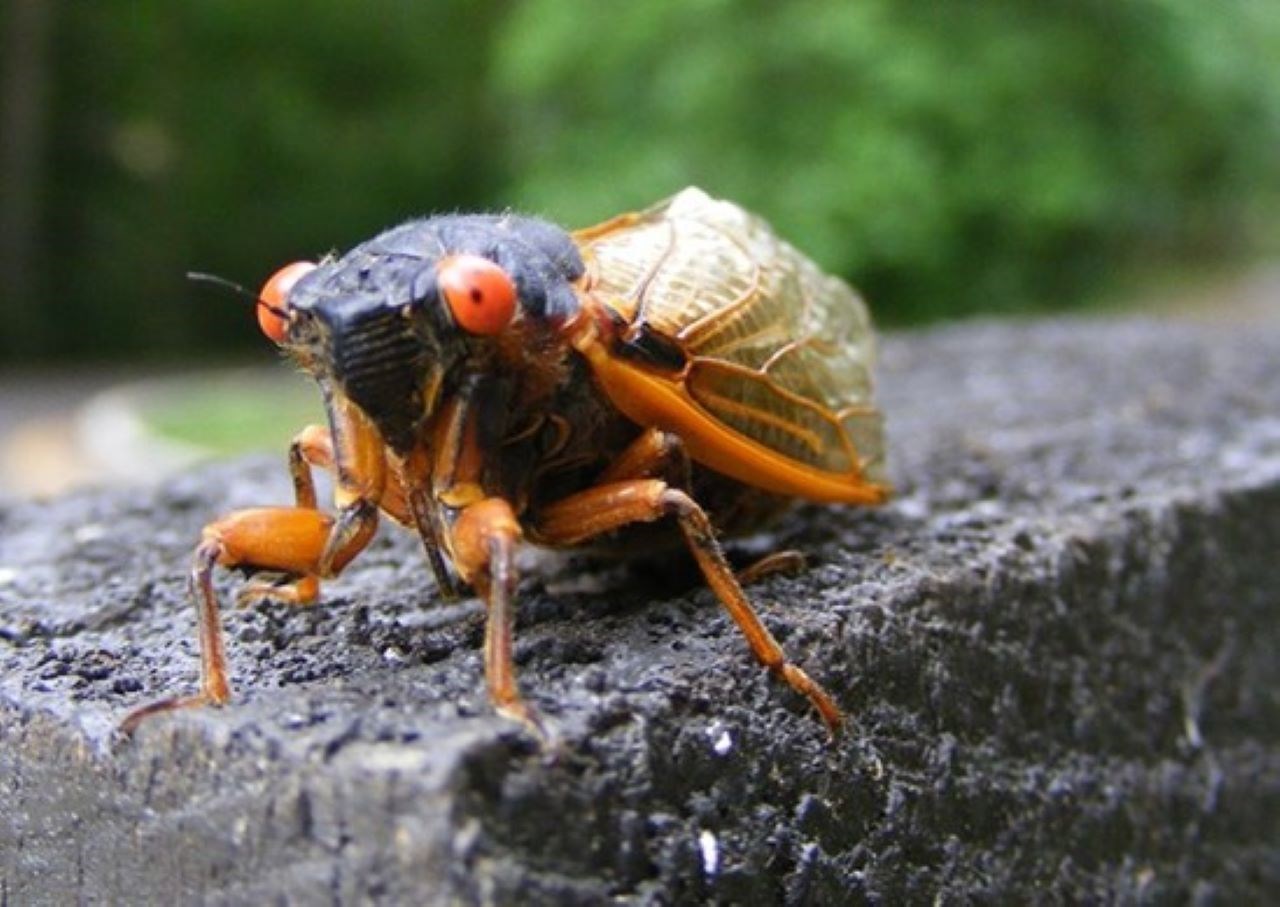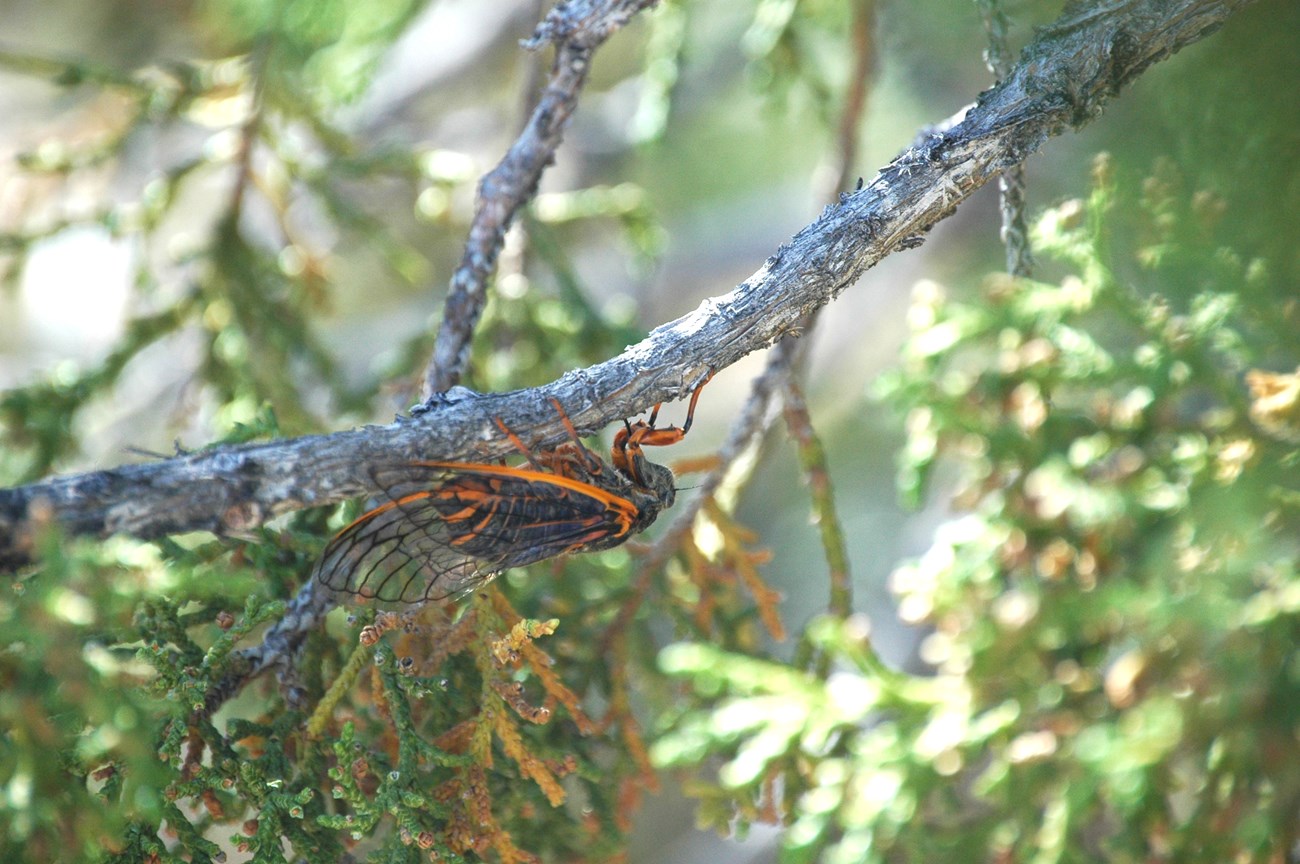Last updated: December 23, 2024
Article
I Didn't Know That!: Emerging Cicadas

Get out your earplugs! In spring 2024, when the ground warmed up, billions, if not trillions, of periodical cicadas emerged in a rare dual emergence event. This monumental occurrence took place when two separate groups emerged across the Midwest and southeastern United States.
Annual vs. Periodical Cicadas
Cicadas are harmless insects and while they can be noisy, they pose no danger to humans. They put on a fascinating natural display, and their loud singing creates a summer chorus as males call to females to breed. Each cicada has a song unique to their species, and scientists identified a new species of cicada as recently as 1998 by its distinct song.
-
Magicicada Chorus
The buzzing, screaming sound of cicadas during the Brood X emergence (2004) in New Jersey.
- Credit / Author:
- Dan Mozgai
Cicadas belong to the order Hemiptera, or the “true bugs.” Young cicadas, or “nymphs,” live underground, feeding from tree roots until they emerge and molt into adults.
For many Americans, cicadas are a yearly occurrence, emerging around July across the lower 48 states. These are the larger (usually green or brown) annual cicadas (of which there are over 100 species in the U.S.). In contrast, the periodical cicadas emerging this year are slightly smaller and have distinctive red eyes and orange wings.

NPS / Nortrup
What is a “Dual Emergence”?
Periodical cicadas are often staggered over time, emerging in various years with little overlap between broods. But in spring of 2024, Brood XIII (a 17-year group) and Brood XIX (a 13-year group) had a synchronized emergence, resulting in a once-in-a-lifetime phenomenon known as a dual emergence.
Why does it happen?
The emergence of large numbers of periodical cicadas for short periods of time is most likely an evolutionary strategy to avoid predators. Birds, reptiles, and small mammals all eat cicadas, but in large groups, while some cicadas are eaten, others still survive and reproduce. This is called prey satiation, and it ensures that there are plenty of cicadas left to breed and perpetuate the cycle in years to come.

NPS Photo
All About Cicadas
How do they affect the environment?
Periodical cicadas are native species that feed from the sugars in tree roots. Even though they feed off trees, they do not damage flowers or crops. In fact, cicadas benefit their environment by providing a great food source for lots of predators! They also help with aerating and cycling soil with their burrows underground.
While cicadas don’t pose any significant danger to mature trees, you may want to protect young trees with mesh or netting if you live in the area of the dual emergence. Egg laying by female cicadas can cause small branches to be damaged.
Are they dangerous?
Cicadas do not bite or sting, and while they may be noisy, they pose no danger to humans. They are also not venomous or poisonous, so there is no need to be alarmed if your pet eats a couple of cicadas.
Pass It On!
Did you learn something new? Pass it on! There is so much to learn about the natural world and how to explore it, but there's no way for everyone to be an expert in everything. That's why sharing knowledge is so important.
I Didn't Know That! Emerging Cicadas
- Cicada life-cycle
- Adults sing for mates and lay eggs in branches
- Tiny hatched nymphs fall to the ground
- Nymphs feed on tree sap underground for up to 17 years
- Nymphs emerge and molt into adults
- Cicada facts
- Cicadas are a vital food source for many animals.
- Cicadas pose no danger to people or pets!
- Periodical cicadas emerge when the ground temperature reaches 64 degrees F.
- go.nps.gov/idkt

